NVIDIA Tegra X1 Preview & Architecture Analysis
by Joshua Ho & Ryan Smith on January 5, 2015 1:00 AM EST- Posted in
- SoCs
- Arm
- Project Denver
- Mobile
- 20nm
- GPUs
- Tablets
- NVIDIA
- Cortex A57
- Tegra X1
Automotive: DRIVE CX and DRIVE PX
While NVIDIA has been a GPU company throughout the entire history of the company, they will be the first to tell you that they know they can’t remain strictly a GPU company forever, and that they must diversify themselves if they are to survive over the long run. The result of this need has been a focus by NVIDIA over the last half-decade or so on offering a wider range of hardware and even software. Tegra SoCs in turn have been a big part of that plan so far, but NVIDIA of recent years has become increasingly discontent as a pure hardware provider, leading to the company branching out in unusual ways and not just focusing on selling hardware, but selling buyers on whole solutions or experiences. GRID, Gameworks, and NVIDIA’s Visual Computing Appliances have all be part of this branching out process.
Meanwhile with unabashed car enthusiast Jen-Hsun Huang at the helm of NVIDIA, it’s slightly less than coincidental that the company has also been branching out in to automotive technology as well. Though still an early field for NVIDIA, the company’s Tegra sales for automotive purposes have otherwise been a bright spot in the larger struggles Tegra has faced. And now amidst the backdrop of CES 2015 the company is taking their next step into automotive technology by expanding beyond just selling Tegras to automobile manufacturers, and into selling manufacturers complete automotive solutions. To this end, NVIDIA is announcing two new automotive platforms, NVIDIA DRIVE CX and DRIVE PX.
DRIVE CX is NVIDIA’s in-car computing platform, which is designed to power in-car entertainment, navigation, and instrument clusters. While it may seem a bit odd to use a mobile SoC for such an application, Tesla Motors has shown that this is more than viable.
With NVIDIA’s DRIVE CX, automotive OEMs have a Tegra X1 in a board that provides support for Bluetooth, modems, audio systems, cameras, and other interfaces needed to integrate such an SoC into a car. This makes it possible to drive up to 16.6MP of display resolution, which would be around two 4K displays or eight 1080p displays. However, each DRIVE CX module can only drive three displays. In press photos, it appears that this platform also has a fan which is likely necessary to enable Tegra X1 to run continuously at maximum performance without throttling.
NVIDIA showed off some examples of where DRIVE CX would improve over existing car computing systems in the form of advanced 3D rendering for navigation to better convey information, and 3D instrument clusters which are said to better match cars with premium design. Although the latter is a bit gimmicky, it does seem like DRIVE CX has a strong selling point in the form of providing an in-car computing platform with a large amount of compute while driving down the time and cost spent developing such a platform.
While DRIVE CX seems to be a logical application of a mobile SoC, DRIVE PX puts mobile SoCs in car autopilot applications. To do this, the DRIVE PX platform uses two Tegra X1 SoCs to support up to twelve cameras with aggregate bandwidth of 1300 megapixels per second. This means that it’s possible to have all twelve cameras capturing 1080p video at around 60 FPS or 720p video at 120 FPS. NVIDIA has also made most of the software stack needed for autopilot applications already, so there would be comparatively much less time and cost needed to implement features such as surround vision, auto-valet parking, and advanced driver assistance.
In the case of surround vision, DRIVE PX is said to deliver a better experience by improving stitching of video to reduce visual artifacts and compensate for varying lighting conditions.
The valet parking feature seems to build upon this surround vision system, as it uses cameras to build a 3D representation of the parking lot along with feature detection to drive through a garage looking for a valid parking spot (no handicap logo, parking lines present, etc) and then autonomously parks the car once a valid spot is found.
NVIDIA has also developed an auto-valet simulator system with five GTX 980 GPUs to make it possible for OEMs to rapidly develop self-parking algorithms.
The final feature of DRIVE PX, advanced driver assistance, is possibly the most computationally intensive out of all three of the previously discussed features. In order to deliver a truly useful driver assistance system, NVIDIA has leveraged neural network technologies which allow for object recognition with extremely high accuracy.
While we won’t dive into deep detail on how such neural networks work, in essence a neural network is composed of perceptrons, which are analogous to neurons. These perceptrons receive various inputs, then given certain stimulus levels for each input the perceptron returns a Boolean (true or false). By combining perceptrons to form a network, it becomes possible to teach a neural network to recognize objects in a useful manner. It’s also important to note that such neural networks are easily parallelized, which means that GPU performance can dramatically improve performance of such neural networks. For example, DRIVE PX would be able to detect if a traffic light is red, whether there is an ambulance with sirens on or off, whether a pedestrian is distracted or aware of traffic, and the content of various road signs. Such neural networks would also be able to detect such objects even if they are occluded by other objects, or if there are differing light conditions or viewpoints.
While honing such a system would take millions of test images to reach high accuracy levels, NVIDIA is leveraging Tesla in the cloud for training neural networks that are then loaded into DRIVE PX instead of local training. In addition, failed identifications are logged and uploaded to the cloud in order to further improve the neural network. Both of these updates can be done either over the air or at service time, which should mean that driver assistance will improve with time. It isn’t a far leap to see how such technology could also be leveraged in self-driving cars as well.
Overall, NVIDIA seems to be planning for the DRIVE platforms to be ready next quarter, and production systems to be ready for 2016. This should mean that it's possible for vehicles launching in 2016 to have some sort of DRIVE system present, although it's possible that it would take until 2017 to see this happen.



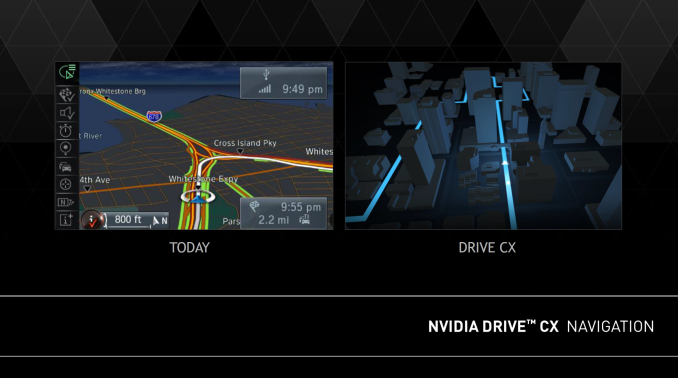
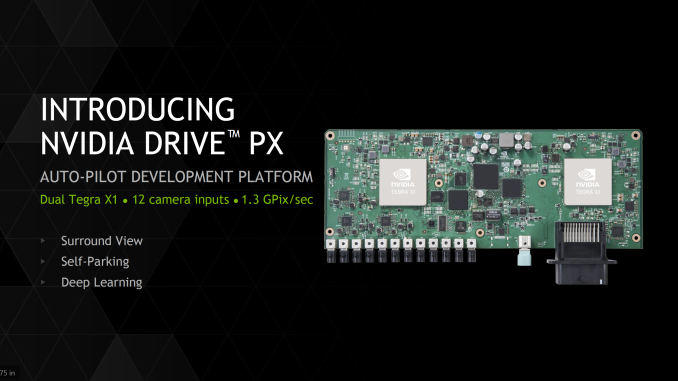
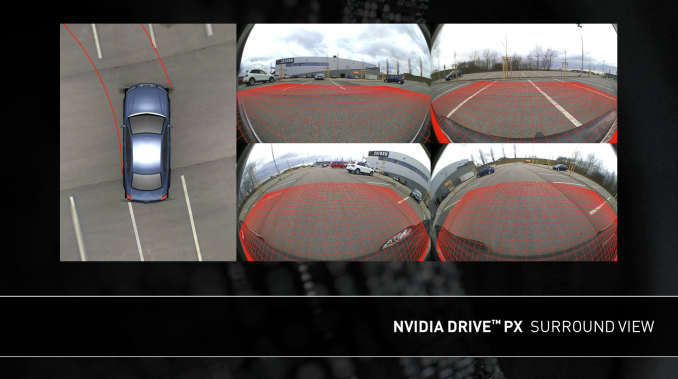

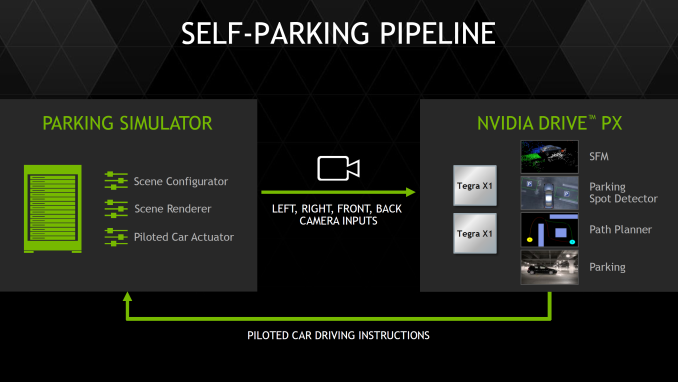


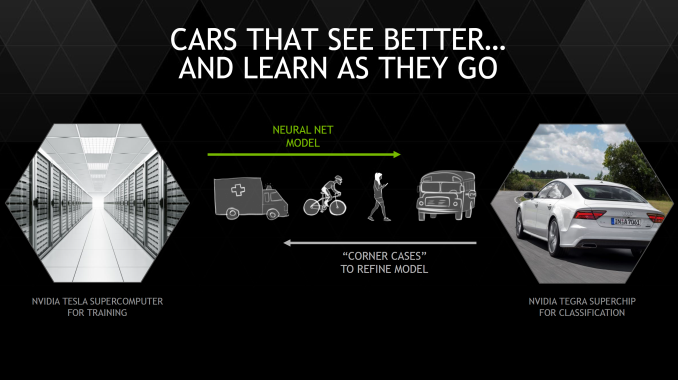
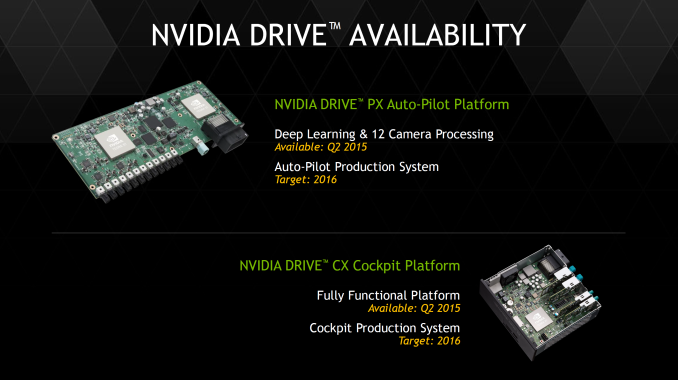








194 Comments
View All Comments
Aenean144 - Monday, January 5, 2015 - link
Honestly, why? What does doing that really benefit Apple?chizow - Monday, January 5, 2015 - link
They'll gain access to better GPU IP immediately, if they are going to pay a licensing fee, might as well pay (presumably) more for better IP I suppose.From a software support standpoint, they'd gain 100% compatibility and portability with all the latest OpenGL specs, so you'd have a shared graphics platform there with their iOS platforms. Then they wouldn't have to much around with Metal and iOS API so much, which would make it easier for them to merge the two platforms as the rumors have suggested.
Aenean144 - Monday, January 5, 2015 - link
None of what you state is a material advantage to Apple.The essence of your belief is that Nvidia will have a more powerful GPU solution than what Apple can come up with their own or through ImgTec. A lot of people don't think that will be true.
On top of that, this Tegra X1 SoC does not appear suitable for phones, and moreover, Nvidia appears to be concentrating on embedded applications with higher TDP with the X1. This would pose a problem for Apple as the iPhone is currently their most important product.
chizow - Monday, January 5, 2015 - link
Not having to support two different graphics APIs, one of which is being developed from scratch, isn't a material advantage to Apple?And a lot of people don't think what Nvidia has isn't already better than what Imgtech can produce? Who are you referring to exactly? Realists already know Nvidia's last-gen Kepler is already better than PowerVR rogue. Remember when PowerVR released roadmaps and those same people expected PowerVR Rogue XT 6-core to match Tegra K1 based on paper spec FLOP counts alone? What happened in reality? Apple needed to add ANOTHER 2 cores in a custom 8-core Rogue XT configuration to trade blows with K1.
The whole point of licensing is that even if the Tegra SoC as a whole doesn't fit their needs, they can license the IP and integrate it however they like into their own SoC.....
Yojimbo - Monday, January 5, 2015 - link
He is talking about Apple licensing a GPU from NVIDIA instead of from IMG. The Tegra X1 is not a GPU, it is an SOC targeted at a specific market segment. The target of the Tegra X1 has been set by the market NVIDIA thinks it can penetrate more than by the abilities of the GPU it contains. NVIDIA was not able to penetrate the smartphone market because of a lack of a good modem option. They have since stopped trying, and this is well-known. Apple has access to a modem, so this is not a concern for them. All they need to consider is if licensing a GPU, or GPU IP, from NVIDIA helps them more than licensing from IMG. I think on the same process technology, NVIDIA's offering would be superior, no matter if used in a phone or tablet.lucam - Wednesday, January 7, 2015 - link
Really? Why NV doesn't do any product with GPU in a phone anymore?name99 - Monday, January 5, 2015 - link
Who says nV is WILLING to license? Do they license to anyone else?pSupaNova - Tuesday, January 6, 2015 - link
http://www.anandtech.com/show/7083/nvidia-to-licen...
chizow - Tuesday, January 6, 2015 - link
And they also generate roughly $266 million per year in revenue as a result of their cross-licensing agreement/settlement with Intel. That obviously makes Intel the most likely suitor as the 1st Nvidia SoC GPU IP licensee, since they already have Nvidia GPU IP in their desktop CPU IGPs but still license IMGtech IP for their mobile SoCs.But my bet is on Apple being the 1st major licensee, largely dependent on the outcome of the Samsung/Qualcomm IP litigation.
chitownbarber - Tuesday, January 6, 2015 - link
Per Samsung's track record, the legal eagles will drag things on for years to come. Not sure what Qaulcomm will do? If you think Apple is in negotiations with Nvidia, which I agree with, then they should be coming to an agreement sometime soon to give the GPU engineers Apple has hired to do their mojo? I'm sure Apple would like nothing better to leave Samsung in the dust by exploiting the advanced gaming market that they are inspiring to, along with a rumored do-all living room console.